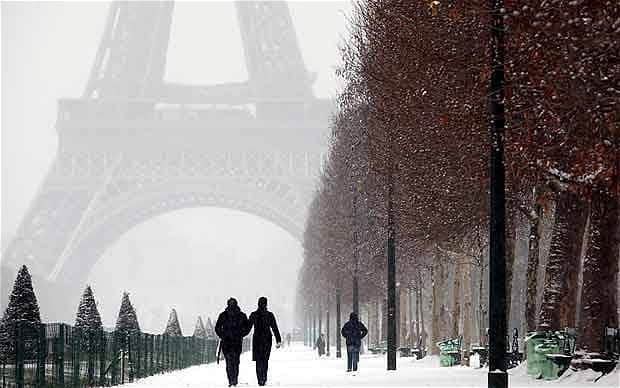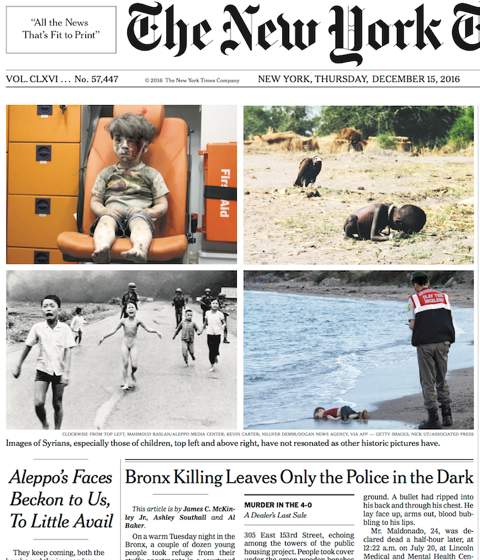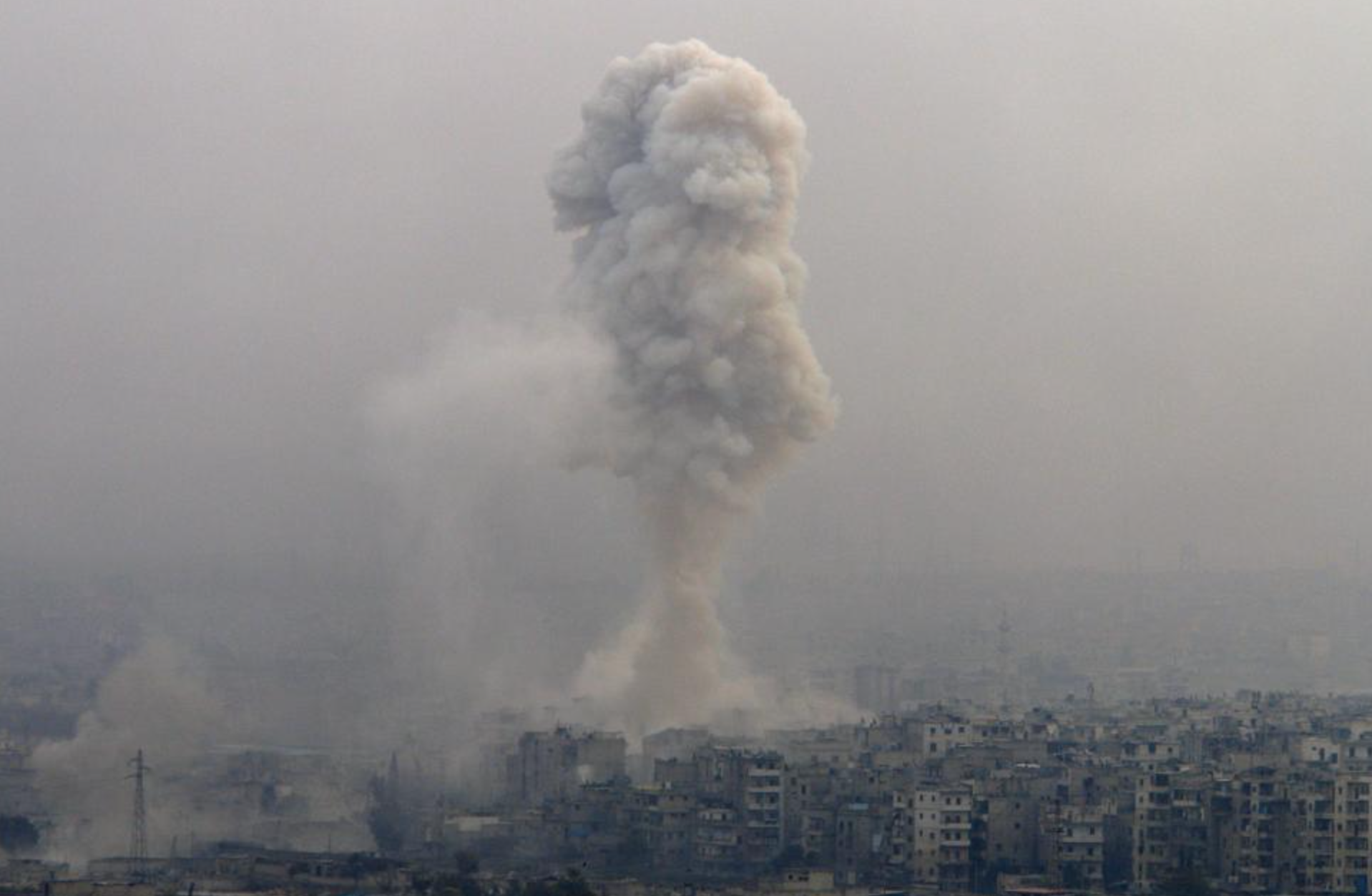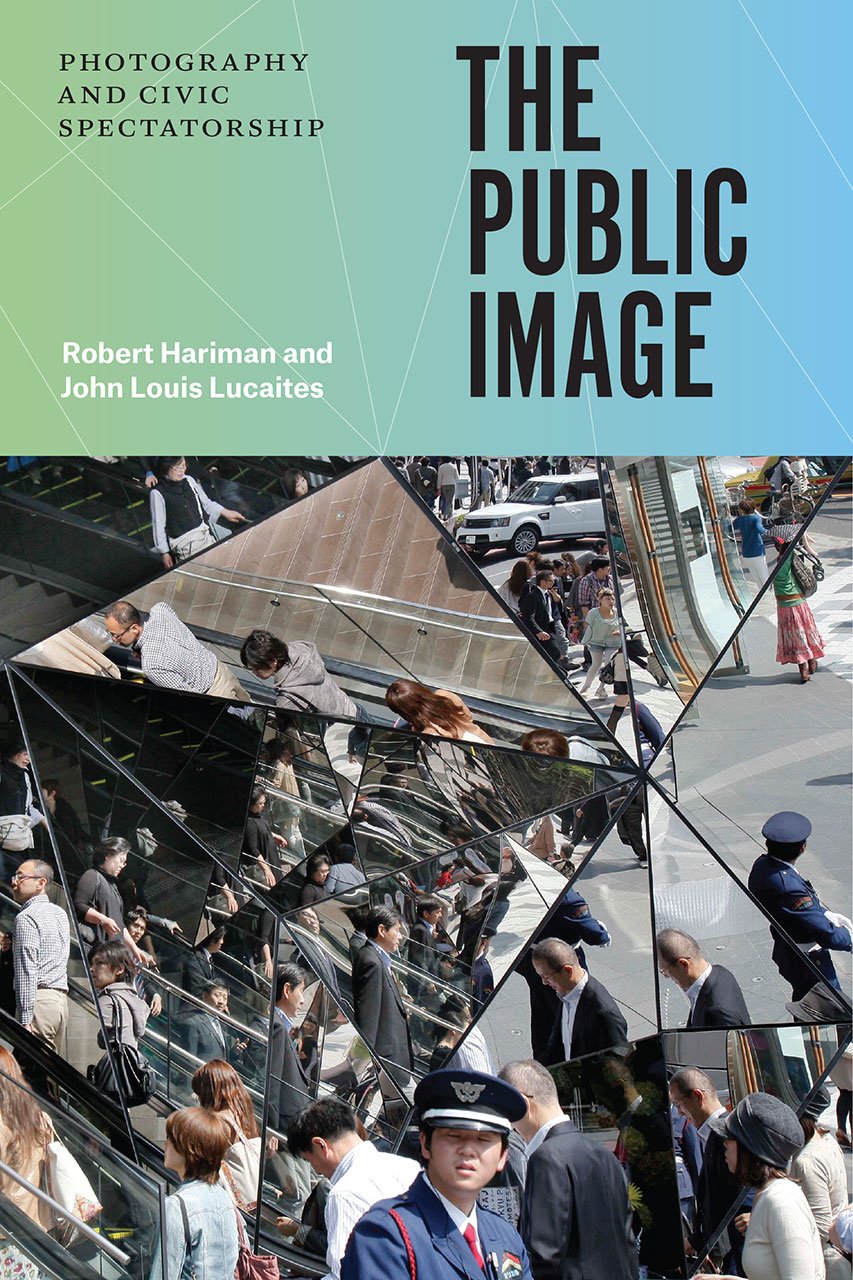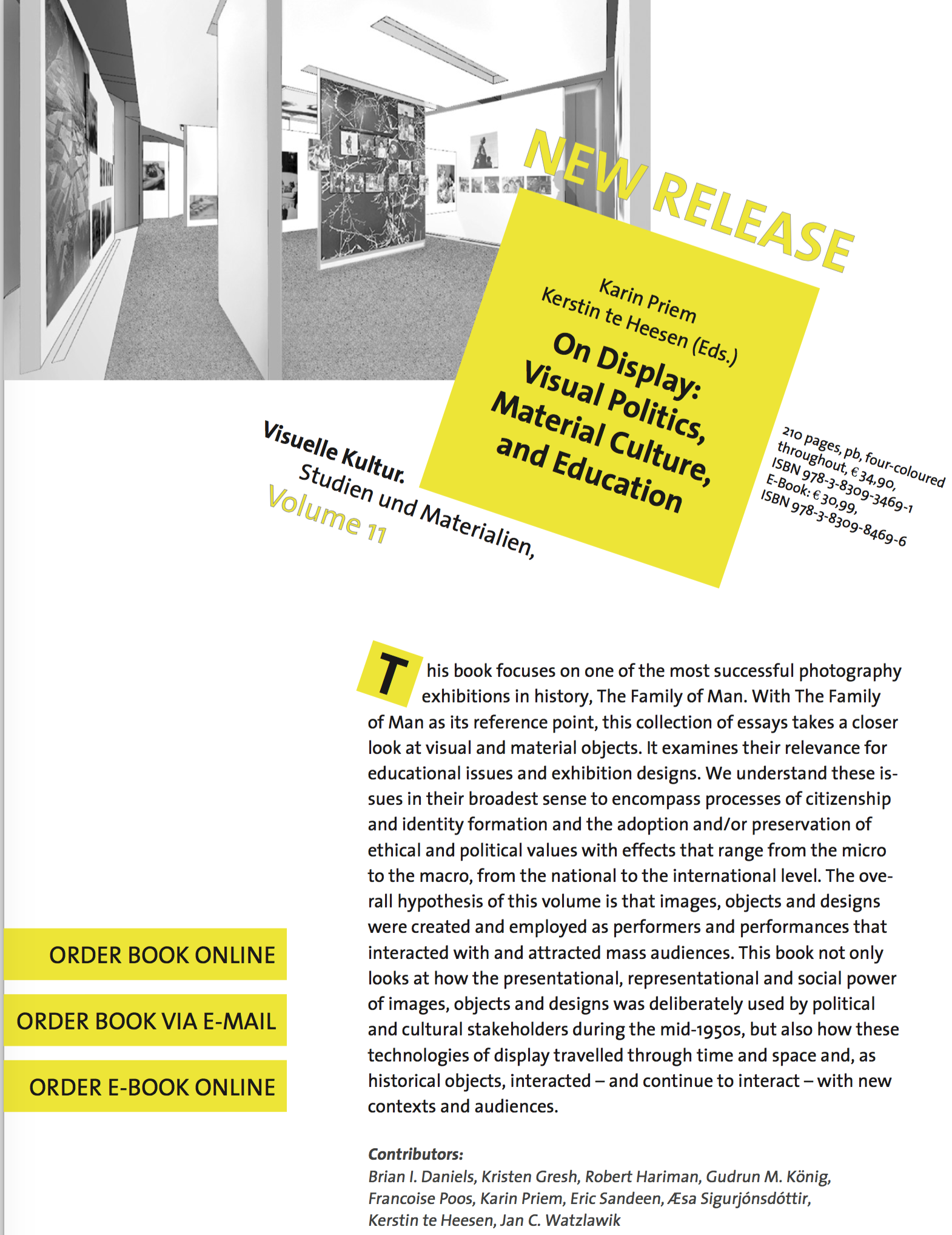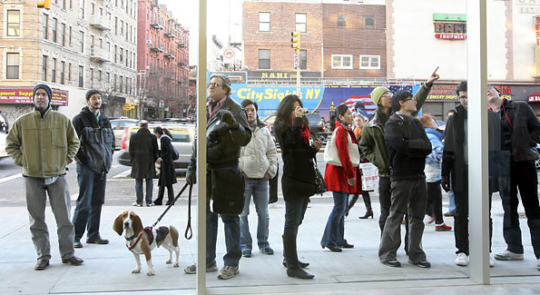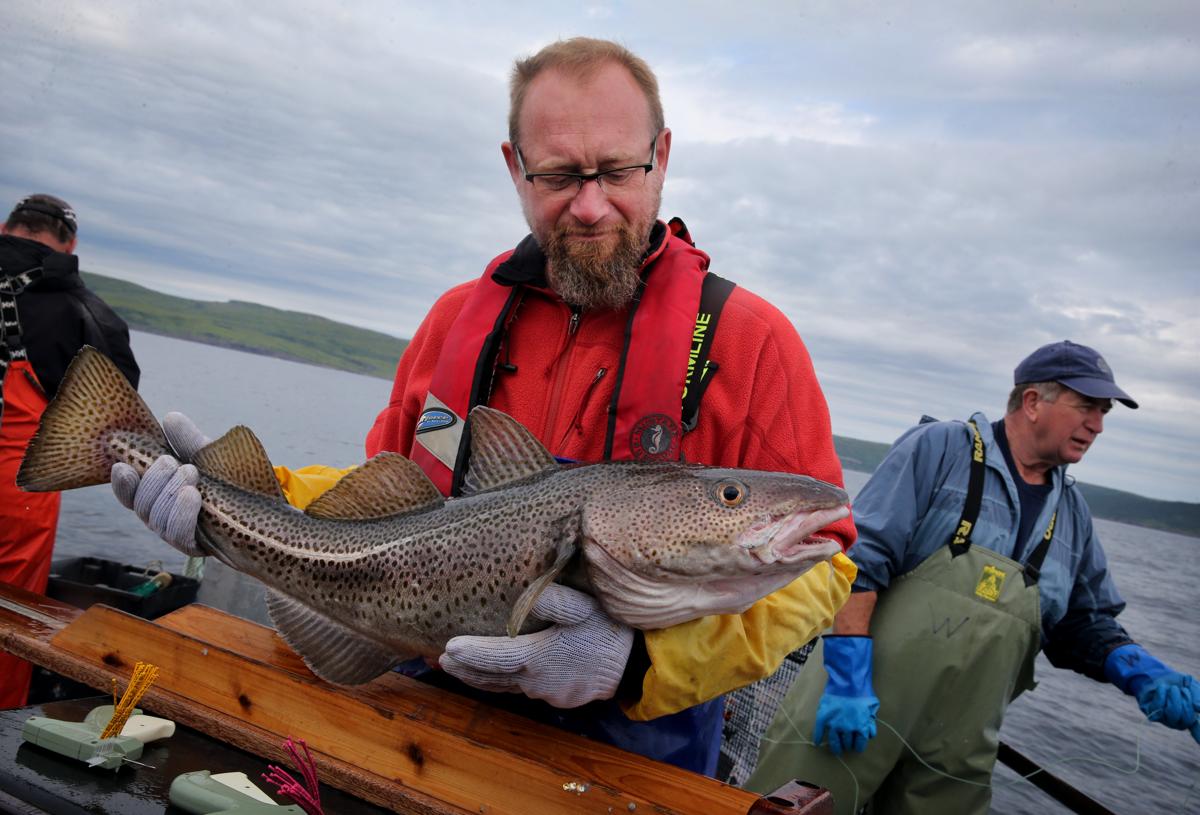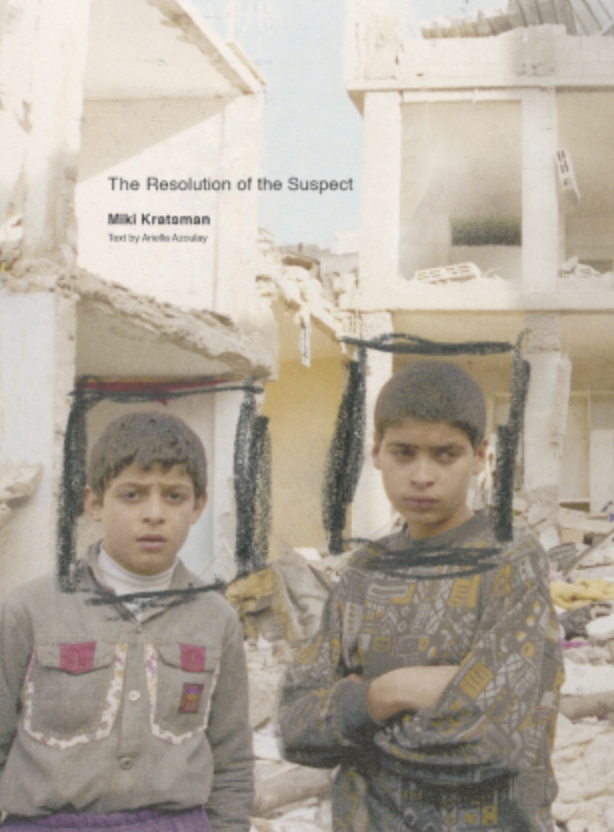Post by guest correspondent Sarah Lingo
Presidential candidates are expected to know the price of milk. Do they? Do we?

This photograph comes from a series by photojournalist Jo-Anne McArthur, taken during her visit to an organic farm in 2010. The photo-essay chronicles the aftermath of a calf’s birth at a facility for milk and veal production; of 30 photographs on McArthur’s blog recording this visit, this one in particular brings me up short.
Reading from left to right, we first see a cow nuzzling her iridescent newborn calf whose legs are still bent beneath it; this birth has just occurred. The mother’s attention is strictly on her calf. As our gaze moves right, we see an audience of three more cows who direct their own gazes toward the birth event. A gate and an expanse of hay and mud separate the cows; these divide the photograph diagonally. All three cows to the right stretch their necks through the gate, getting as close as possible to the birth event. Their desire to participate in the scene, as they stretch their necks to the limit, unites them in shared longing.
Although this photograph does not show us explicit suffering—no blood, no slaughter—suffering is nevertheless present. The photograph makes a particularly effective and damning argument against the dairy industry precisely because it only implies suffering; the photograph engages the spectator’s imagination, forcing them to participate in and complete a cycle of ongoing violence.
In this case, violence is the violence of separation, isolation, bewilderment, heartache, and loneliness. The photo’s caption tells us “Dairy cows who have had their babies removed from them so that we can drink their milk, watch the new mother bond with her calf.” The calf that will immediately be taken away so that the mother can be returned to milking and be impregnated again. The calf that will be taken to a crate, where she will spend the rest of her life until slaughtered for veal—unless she, too, becomes a dairy cow.
We might expect the intensity of the new mother’s gaze, fixed exclusively on her calf. As Gunther Kress and Theo van Leeuwen explain, “the elements placed on the left are presented as Given … a familiar and agreed-upon point of departure for the message” (181)—here, motherhood and its presumed instincts. We tacitly accept a demonstration of mothering so commonly assumed to exist across all species.
But the focused gaze of the other cows reveals another intense engagement. Their interest might surprise us. What investment do these cows have in a birth that is not their own? For that, we can look to the right of the photograph as it “present[s] … something which is not yet known, or perhaps not yet agreed upon by the viewer, hence as something to which the viewer must pay special attention.” These cows are “‘problematic’ [and] ‘contestable’” even as “the Given is presented as commonsensical, self-evident.” What is “problematic” and “contestable” about this photograph is the future that awaits mother and her calf, a reality embodied by the cows to the right.
We see here the past, present, and future simultaneously. For the new mother and her calf, this is their present: a moment of intimacy before an inevitable separation. For the cows to the right, the new mother and her calf represent a past, as all three of these cows have almost certainly given birth themselves and have been subsequently separated from their calves. The gate creates a diptych, dividing the past and the future and telling the story of all the cows that give birth on dairy farms.
The still photograph perpetually delays the inevitable suffering experienced by these and other dairy cattle. It suggests but does not show those impending traumatic events—the separation of mother and calf, the calf’s death. I am reminded of Barbie Zelizer, who writes of about-to-die images that such photographs are “situated within the final moment in which it is still possible to hope, where the inevitability of death might yet be avoided” (58).
Instead of documenting a single event, this photograph presents the suffering that is always about to happen: the ongoing violence perpetuated within the dairy industry. Such violence is never over, never resolved. The spectator must fill in the blanks, extrapolate from the cows on the right—who also are spectators—to face what is to come. The photograph forces us to put the pieces together ourselves, to see what has been, what is, and what will be all at once. It reveals the emotional and moral costs hidden in the price of milk: a bill of suffering that we would rather not see.
Darkness presses in from above, and the spectator has to strain to make out the photograph’s finer details. This required effort is representative of the spectator’s larger task of making up for what is unstated and unintelligible about the photograph. We must work to make meaning, to carry the narrative presented here to its logical conclusion; the photograph requires an act of imagination to complete its narrative. Such engagement makes this photograph particularly persuasive because it calls the spectator to actively participate in the violence the image itself only implies.
As Zelizer writes, those “depicted may or may not die, [but] that is incidental to the fact that they stand in for those who do. Because death lingers as a potentiality only, it is up to the public to make the contingent death certain by inferring death from what is depicted” (72). The spectator, having participated in this violent narrative, is left only to wonder, what is required to disrupt this sequence of events, if not for these particular cows, for innumerable others?
Photograph by Jo-Anne McArthur/http://www.weanimals.org/gallery.php?id=90#ph1.
Sarah Lingo is a student in the doctoral program in Rhetoric and Public Culture at Northwestern University. She can be contacted at sklingo@u.northwestern.edu.
3 Comments
